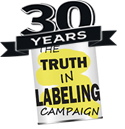We understand their lies
There’s a rich and powerful corporation that manufactures and sells the product known as monosodium glutamate (MSG). When it was first suggested that MSG might cause adverse reactions, they launched a vigorous campaign to make sure that their sales would not be disturbed. In 1968, faced with allegations that MSG has toxic potential, Ajinomoto U.S.A., Inc., established a nonprofit corporation, recruited scientists and others to defend the safety of their product, produced studies that guaranteed that there would be no hint that MSG might be toxic. and unleashed a public relations campaign.Their success has been phenomenal. Since 1991, no major media outlet in the United States has even suggested that MSG might be anything less than safe. And the FDA, which has been in Ajinomoto’s pocket since 1968, has been most cooperative.
Key to their success has been their control of both the media and relevant government agencies, giving them the latitude to broadcast lies about the safety/toxicity of MSG.
Their lies range from simple untruths, to omitting information that contradicts their lies; to telling a story (painting a picture that draws the reader away from the truth, conveying a false impression); to citing studies built on research designs purposely constructed to deceive the reader.
Simple lies
-- “to speak falsely or utter untruth knowingly, as with intent to deceive” (https://www.dictionary.com/browse/lie)Falsehood #1: The glutamate contained in MSG is identical to the glutamate in the human body.
Possibly the most regularly regurgitated lie told by the Glutes is the lie that glutamate contained in MSG is identical to glutamate in the human body.
Actually: The glutamate in the human body is L-glutamate, only whereas manufactured glutamate (found in monosodium glutamate and pea protein isolate, for example) is made up of both L--glutamate, D-glutamate, and other impurities. Impurities include D-glutamic acid, pyroglutamic acid, and others depending on the starting materials used (or materials used to feed genetically modified bacteria) and the extent of processing.
Falsehood #2: MSG is very well researched and found to be safe.
One of the Glutes most often repeated lies is that MSG is very well researched and has been found safe by “authoritative” bodies or “well respected international agencies.”
Actually: Independent researchers have found L-glutamate to produce brain damage, endocrine disorders, and observable adverse reactions like migraine headache, hives, and seizures.
Those studies that claim to have demonstrated monosodium glutamate safety have been rigged to fail to produce evidence of toxicity.
Claims that “authoritative” bodies or “well respected international agencies” have found MSG to be a harmless food additive are false. Neither independent scientists nor independent regulators have deemed monosodium glutamate safe. FDA studies, which were actually reviews, have always been staffed by persons with ties to the glutamate industry.
The regulators and/or authoritative bodies cited by the glutamate industry did no research of their own, but were given copies of FDA opinions on MSG safety or were provided review information by Ajinomoto, its not-for-profit corporations, and/or its agents — the International Food Information Council (IFIC) and the International Life Sciences Institute (ILSI), for example. And the vast body of published research demonstrating monosodium glutamate toxicity was not shown to them.
Falsehood #3: MSG has been used for over a century without adverse reactions.
Actually: Since 1968, there have been copious reports of brain damage, endocrine disorders, and adverse reactions following ingestion of MSG; and the glutamate cascade has been implicated in such disease conditions as addiction, stroke, epilepsy, degenerative disorders (Alzheimer's disease, ALS, and Parkinson's disease), brain trauma, neuropathic pain, schizophrenia, anxiety, and depression.
Falsehood #4: MSG is naturally made, similar to yogurt, vinegar and wine.
Actually: MSG is manufactured using genetically modified bacteria that excrete glutamic acid through their cell walls. The only similarity to yogurt, vinegar, and wine is that their production includes fermentation.
Falsehood #5: Monosodium glutamate occurs naturally in food.
Actually: MSG is manufactured using genetically modified bacteria that excrete glutamic acid through their cell walls. In the United States, monosodium glutamate is produced in Ajinomoto’s plant in Eddyville, Iowa.
MSG doesn’t occur naturally in anything.
The super lie
The biggest lie of them all is that MSG is harmless. But it’s more than a lie. It’s not just that MSG is harmful. MSG contains excitotoxic -- brain damaging -- free glutamate. The perfect poison. And withholding this information from the public, the medical community, and neuroscientists has impeded the progress of science.
What makes the super lie especially onerous, is that it has been intentionally constructed using research designs purposely constricted to deceive the reader. (See Analysis of fraudulent human studies)
Lies of omission
Omitting information that contradicts their lies.
Lies of a different sort
Perhaps they’re not lies in the traditional sense, but inventing fictions that draw the consumer’s attention away from the truth for the purpose of promoting a toxic product fits my understanding of a lie. Telling a story -- painting a picture -- that draws the reader away from the truth, would have greater impact than any simple lie could have.
You’ve probably heard each lie so many times by now that you think that most are true. Subjects exploited are:
Umami
Plant-based
Low salt
Fifth taste
Plant growth enhancers

